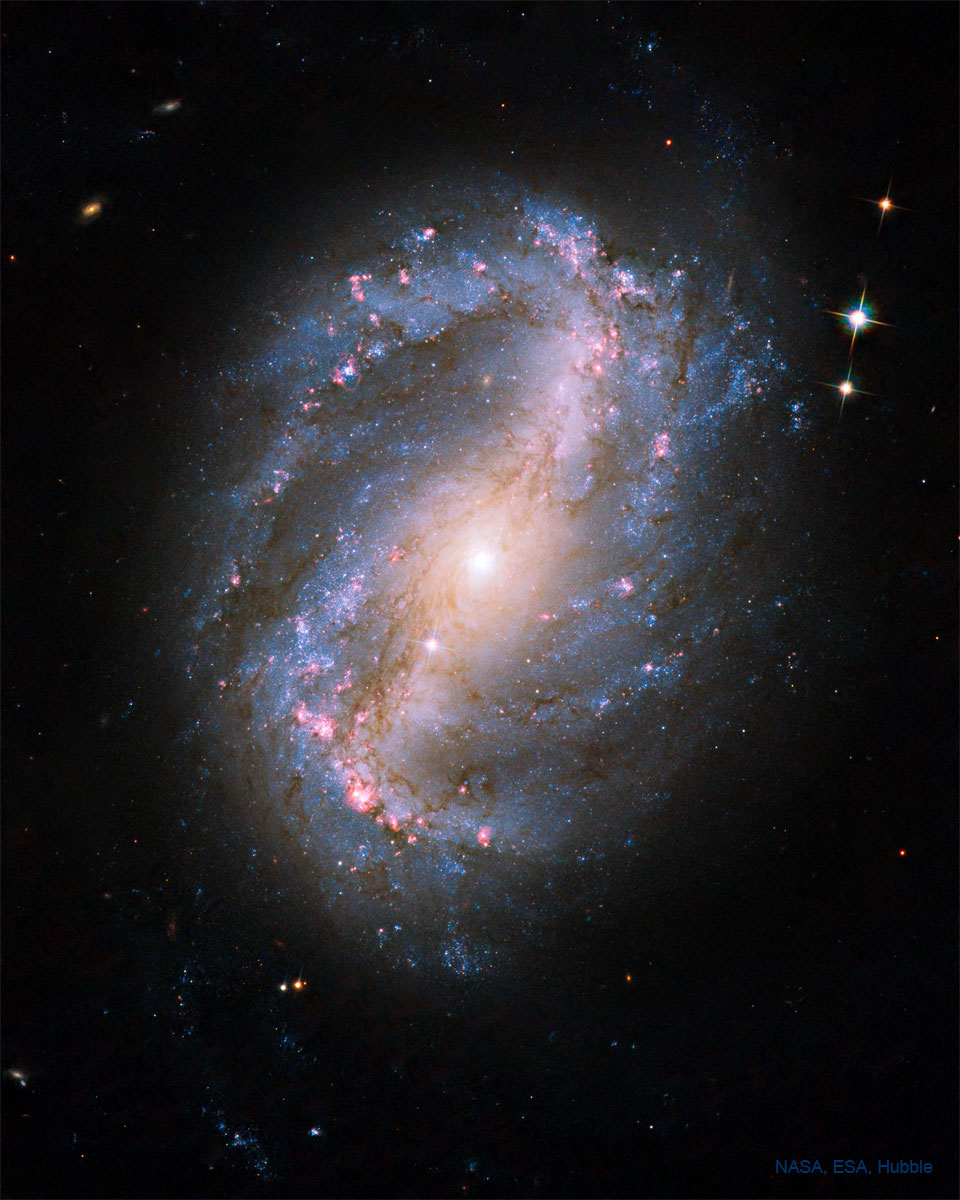Today's APOD is a nice picture of a small galaxy!

How do we know that NGC 6217 is small? Well, you can almost tell at a glance when you compare it with M61, can't you? Note that the pink emission nebulas in both galaxies are about the same size, their bright, almost white centers are about the same size, the bars (the elongated yellowish structures with dust lanes running through the centers of the galaxies are about the same size, but M61 has a much larger and more massive set of spiral arms.
Both NGC 6217 and M61 have a lot of star formation at their bar ends and in their arms. Actually it is M61 that is the oddball here, because M61 is a large galaxy, and it is quite unusual for large galaxies to have so much star formation in them. I believe that M61 is about the same size as the Milky Way, but it is much brighter due to the high proportion of highly luminous star clusters in its arms. The only large and reasonably nearby galaxy that has more star formation and bluer colors than M61 that I can think of is
M101, but M101 looks "flimsier" and less massive than M61, in my opinion. It has a quite small yellow center.
So M61 is a really unusual large galaxy, but NGC 6217 is, I think, fairly typical of a richly starforming specimen of a relatively small galaxy - well, let's call them bantam weight galaxies, so they are hefty enough to be allowed to compete in the Galactic Olympic Games!
Another contender in that weight class in the Galactic Olympic Games may be M83. Actually, M83
looks larger to me than NGC 6217, because of M83's elegant and symmetrical shape and extremely well defined dust lanes:
Can we be sure that M83 really is a smallish (bantam weight) galaxy? Yes, because
NASA calls it "our own Milky Way galaxys smaller cousin"! (Hey, I'm not the one that forgot to put the apostrophe in the word "galaxys", I'm just quoting NASA!)
Anyway. Some smallish galaxies experience a fantastic flurry of star formation, which is rarely seen in larger galaxies. Large galaxies have typically undergone so many at least minor mergers and so many episodes of enhanced star formation that they have severely depleted their reservoirs of prime star forming material.
Smallish galaxies, especially those that live relatively isolated (although they may have at least one small companion) may hang on to a lot more gas, particularly in relation to their overall sizes. Just look at this great picture by R. Jay GaBany of "largish" dwarf galaxy NGC 4449 and its tiny little companion (or intruder?):
Wowzers, that's what I call a starburst!

So why is it that so many richly starforming spiral galaxies appear to be barred galaxies? Well... beats me!
Ann
 Barred Spiral Galaxy NGC 6217
Barred Spiral Galaxy NGC 6217




